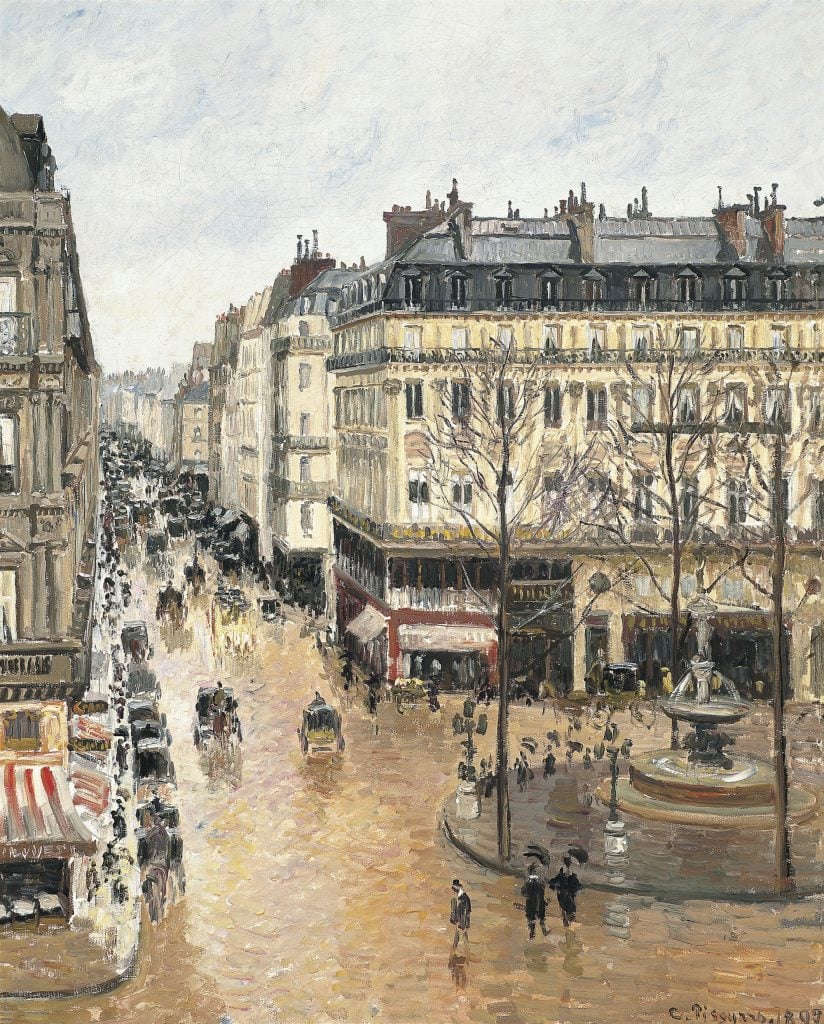Law & Politics
A U.S. Appeals Court Rules That a Madrid Museum Can Keep a Nazi-Looted Pissarro Painting
The ruling is a blow for the heirs of Jewish collector Lilly Neubauer, from whom the painting was confiscated in 1939.

The ruling is a blow for the heirs of Jewish collector Lilly Neubauer, from whom the painting was confiscated in 1939.

Adam Schrader

The Thyssen-Bornemisza Museum in Madrid has been allowed to keep a painting by Impressionist painter Camille Pissarro, which was looted by the Nazis during World War II, after an appeals court in the United States found that Spanish law should apply over California law. The former deems the institution can retain the work if it had been owned for three years in good faith and in the absence of any ownership disputes, while the latter states that a holder of stolen property does not acquire rights to the work until the statute of limitation expires.
The unanimous decision was handed down by a three-person panel of the Ninth Circuit Court of Appeals in Pasadena on January 9, affirming the decision of a lower court judge, court records show. The decision nearly wraps up one of the oldest cases in the United States centered on Nazi art theft. The plaintiffs could still appeal the decision to a full 11-judge panel of the Ninth Circuit court.
The case centered around Pissarro’s painting Rue Saint Honore, Apres Midi, Effet De Pluie (1897), taken by German Nazis in 1939 from Lilly Neubauer, a Jewish woman who fled Germany with her husband to England. Her descendants would eventually make it to the United States.
Neubauer was forced to sell the painting to the Nazis for 900 Reichsmarks, about $360 at the time and about $7,895 in modern day when adjusted for inflation. Ultimately, the Gestapo confiscated the painting and she was never paid.
Neubauer did file a claim for restitution of the painting in 1948 and the United States Court of Restitutions Appeals determined that she did rightfully own the painting in 1954. But it was never returned to her.
The painting passed through hands until the Thyssen-Bornemisza Museum bought the painting from Baron Hans Heinrich Thyssen-Bornemisza in 1993.
Neubauer’s grandson, Claude Cassirer, eventually learned of the location of the painting and petitioned for its return in 2001, filing a lawsuit four years later under the Foreign Sovereign Immunities Act. He died in 2010 and the case passed to his son, David Cassirer, and the estate of his daughter, Ava.
About 15 years after the case was first brought, it eventually worked its way up to the U.S. Supreme Court, which threw out the Ninth Circuit court’s previous decision by ruling that it had misapplied rules used when multiple jurisdictions for a case could apply. The case was handed back down to the Ninth Circuit court.
In this case, the court had to determine if the laws of California where the lawsuit was filed or the laws of Spain would supersede the other in order for the court to reach its decision on the return of the artwork. The Ninth Circuit court in its latest decision agreed that “the Nazis stole the painting from Lilly Neubauer,” but had to use California’s choice-of-law test to make the determination about which entity’s laws to apply.
“We conclude that, under the facts of this case, Spain’s governmental interests would be more impaired by the application of California law than would California’s governmental interests be impaired by the application of Spanish law,” Circuit Judge Carlos T. Bea wrote for the panel. “Thus, applying California’s choice-of-law test, we hold that Spanish law must apply.”
In a concurring opinion, Circuit Judge Consuelo Callahan said that, though the law led to the retention of the painting by the museum in Spain, the Thyssen-Bornemisza Museum should have voluntarily handed it over to the family to honor its commitment to returning Nazi-looted art to victims.
More Trending Stories:
Art Dealers Christina and Emmanuel Di Donna on Their Special Holiday Rituals
Stefanie Heinze Paints Richly Ambiguous Worlds. Collectors Are Obsessed
Inspector Schachter Uncovers Allegations Regarding the Latest Art World Scandal—And It’s a Doozy
Archaeologists Call Foul on the Purported Discovery of a 27,000-Year-Old Pyramid
The Sprawling Legal Dispute Between Yves Bouvier and Dmitry Rybolovlev Is Finally Over